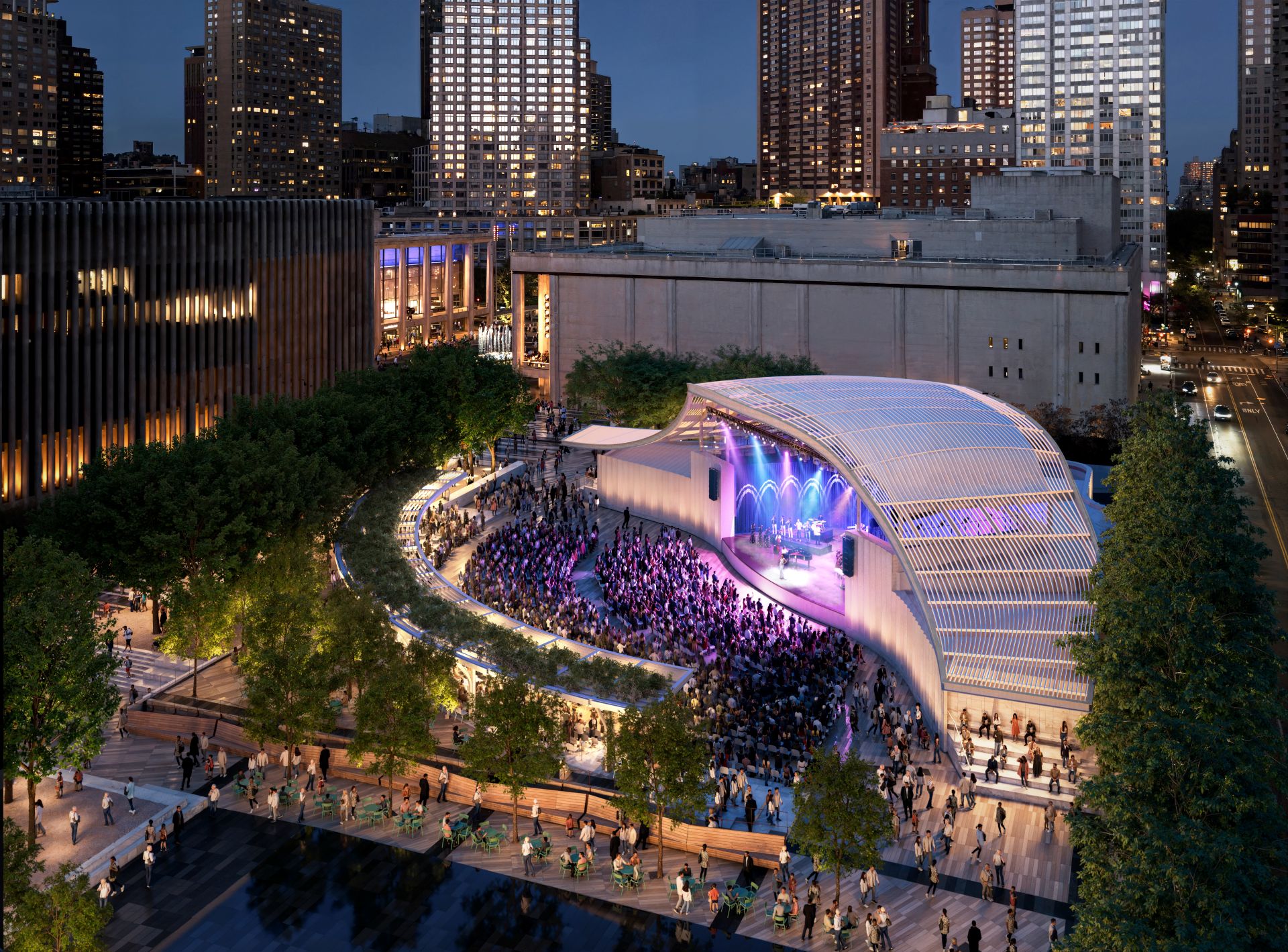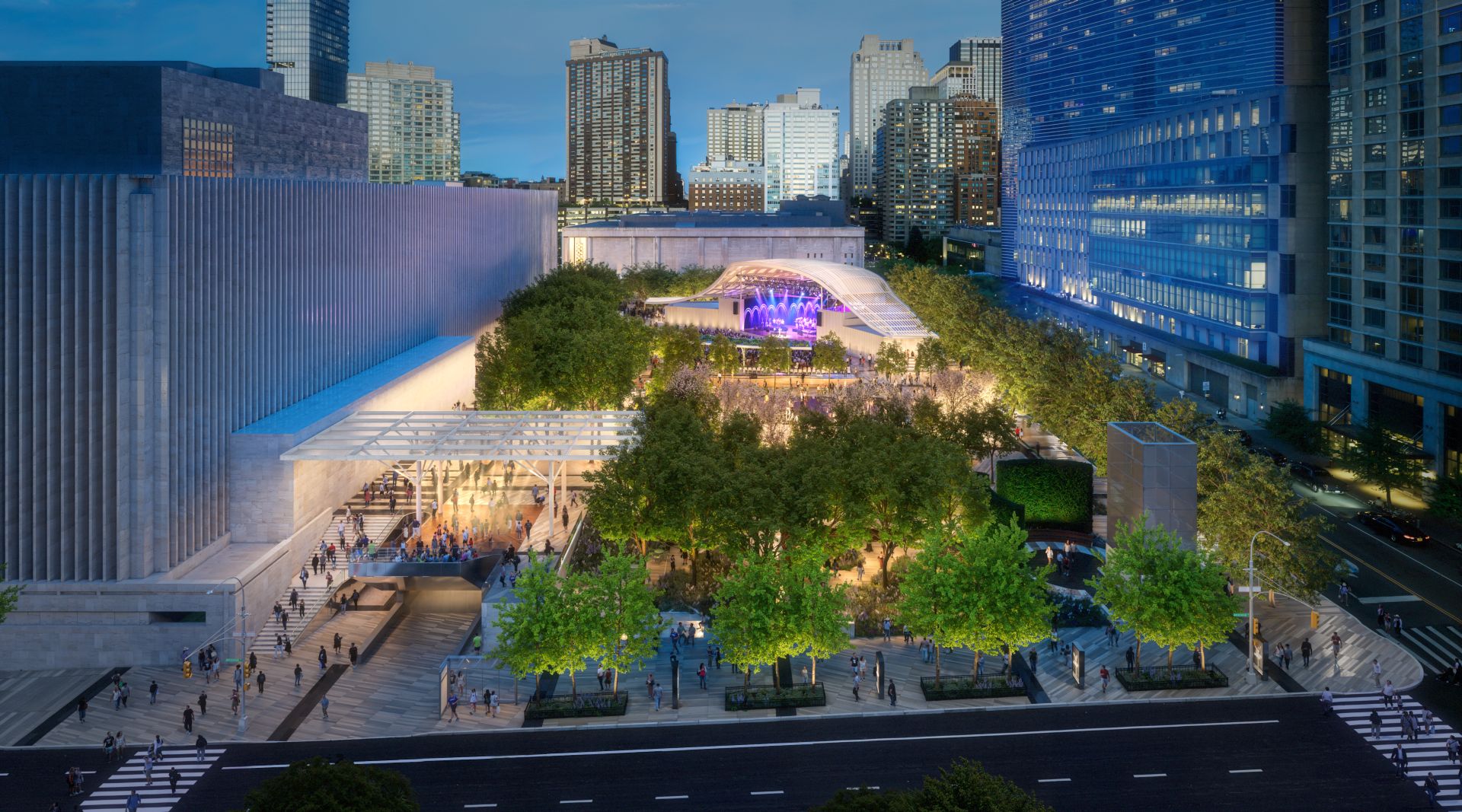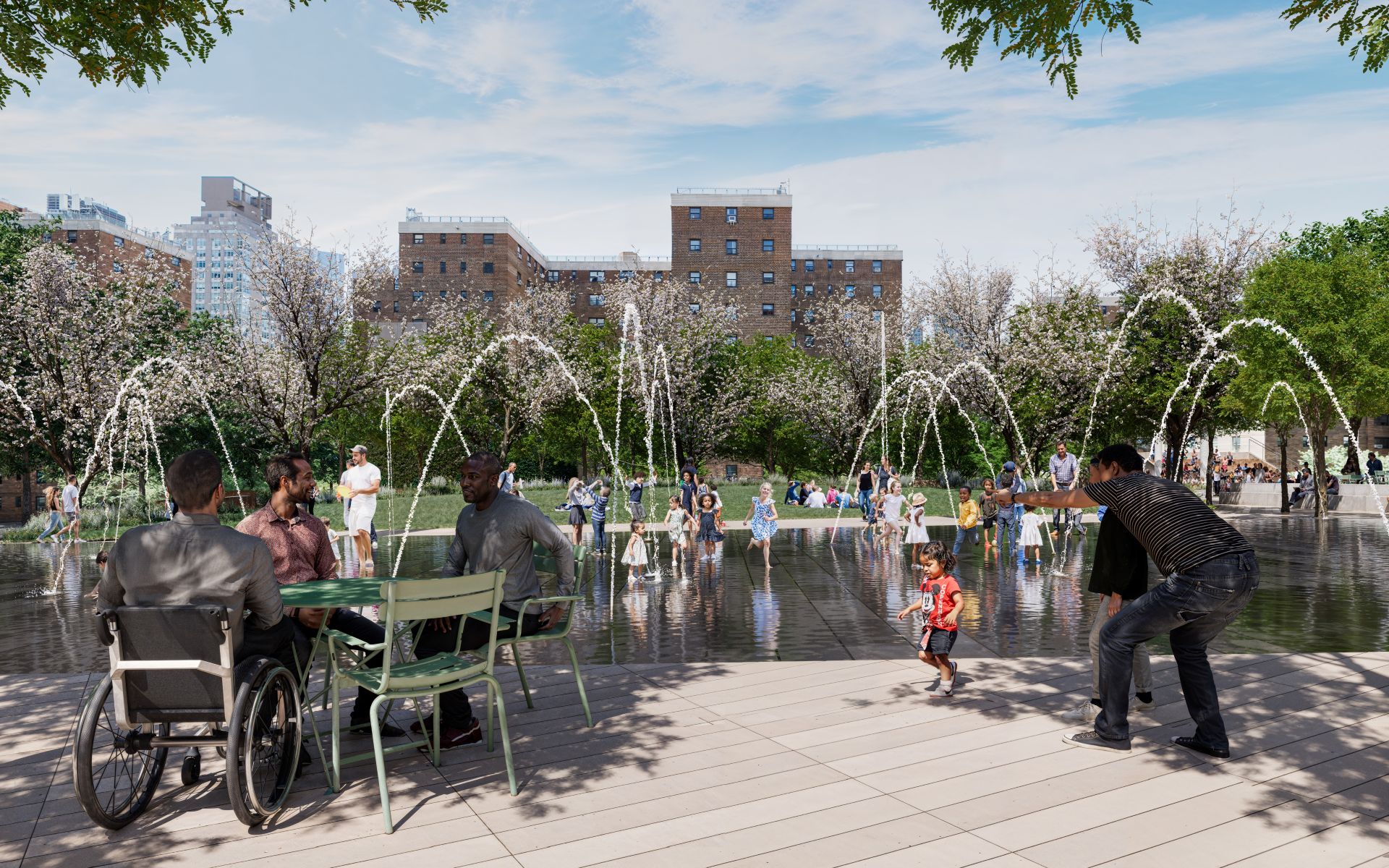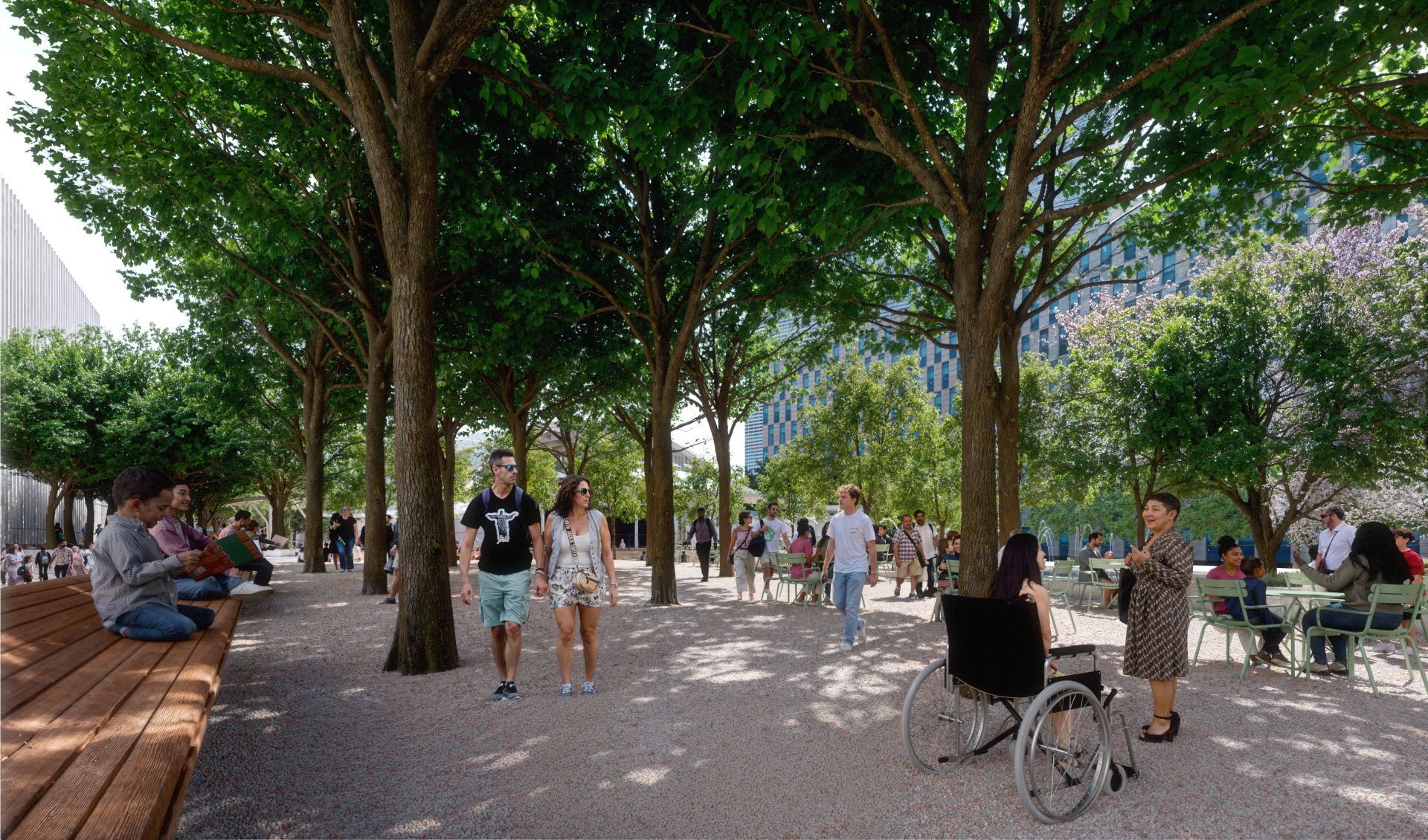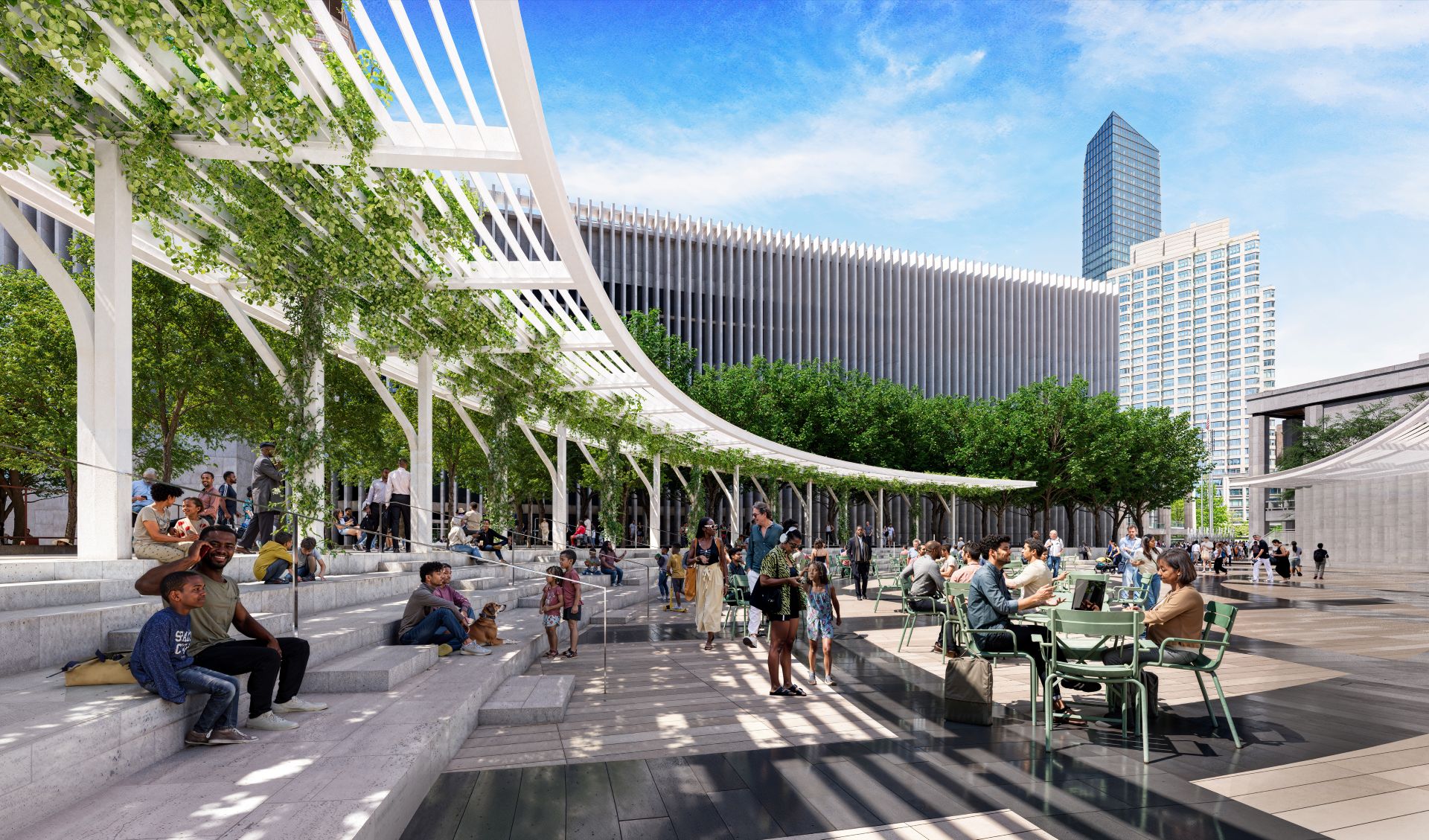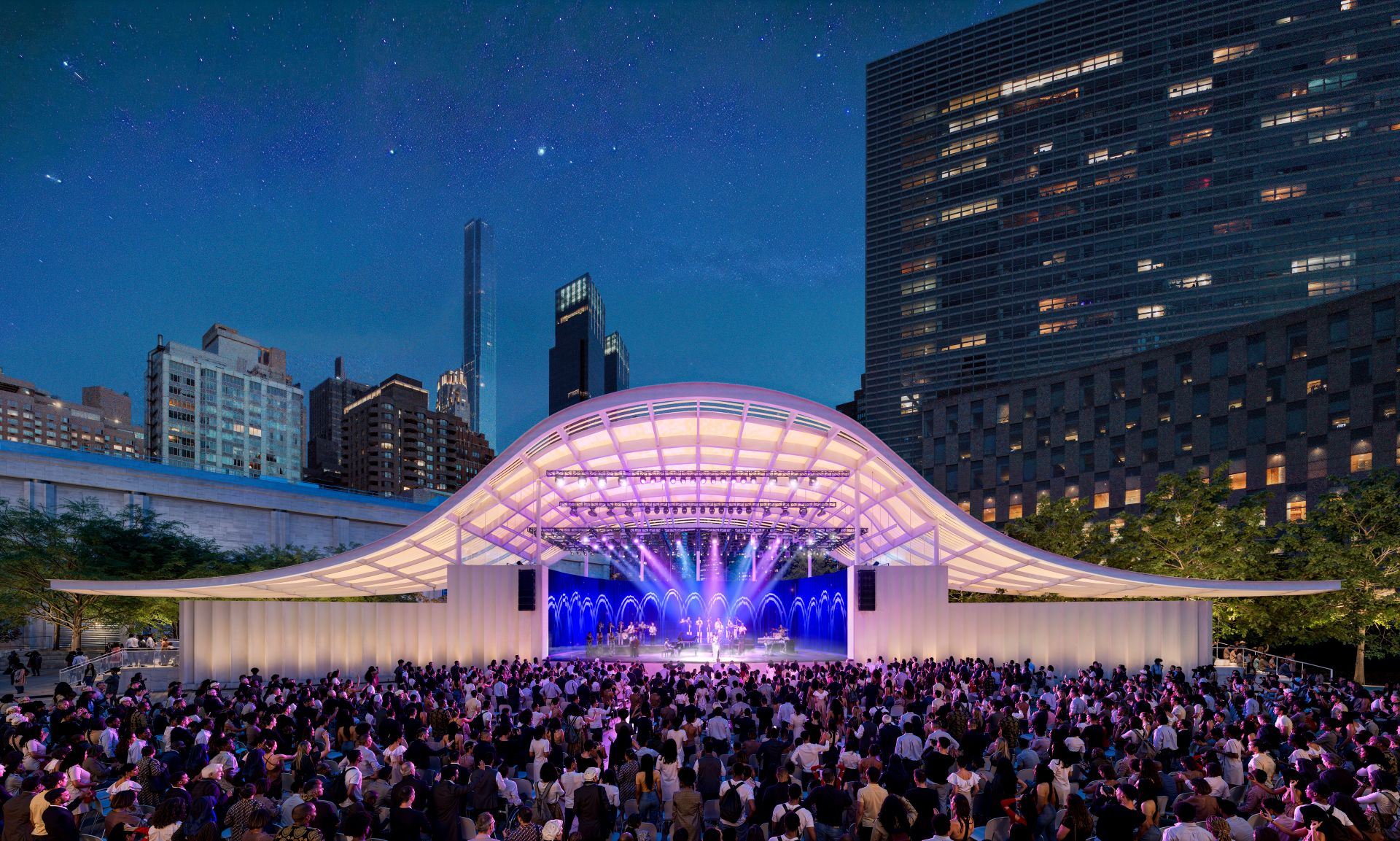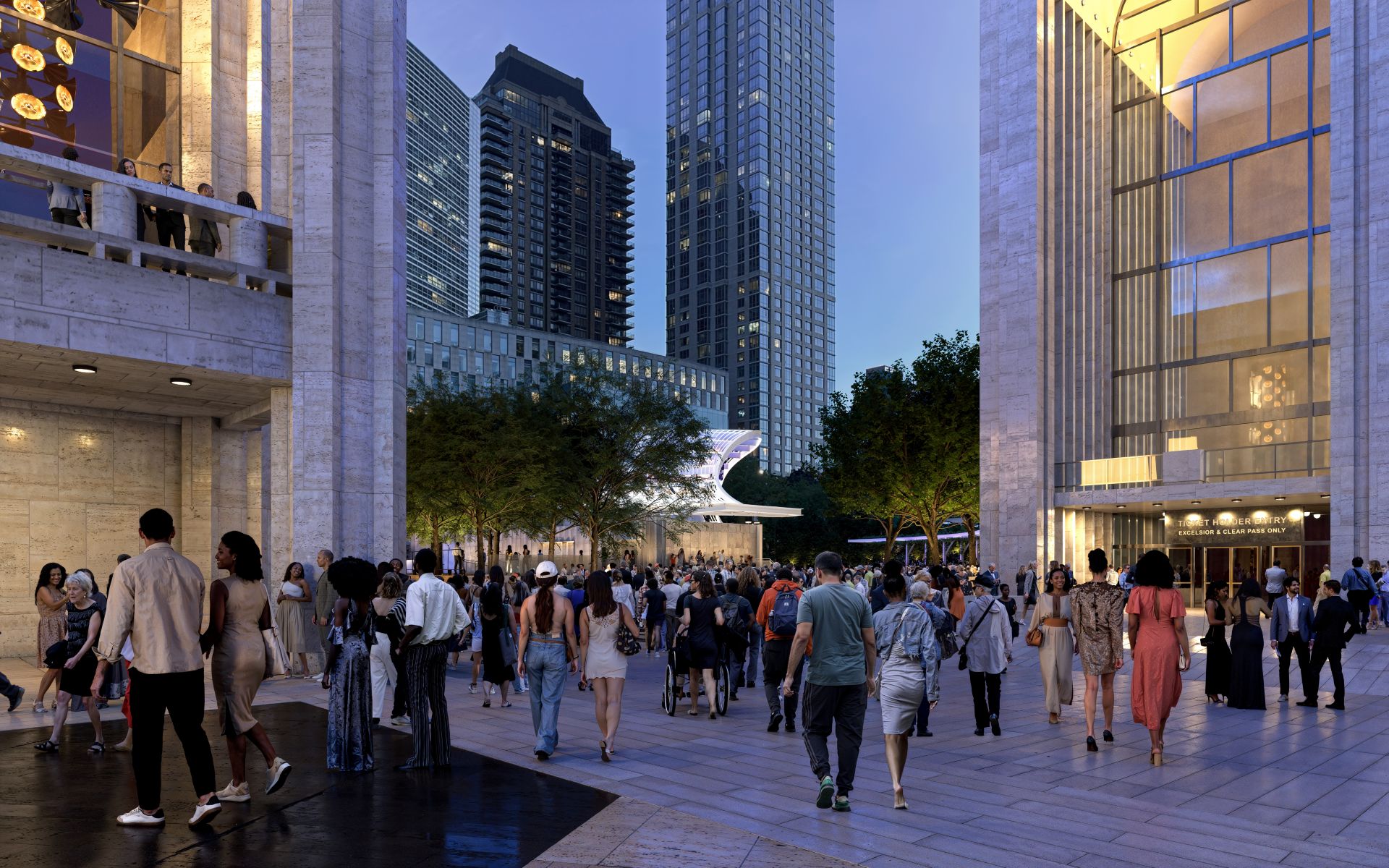Our founder, Stavros S. Niarchos, supports Lincoln Center’s early offerings
Design Renderings
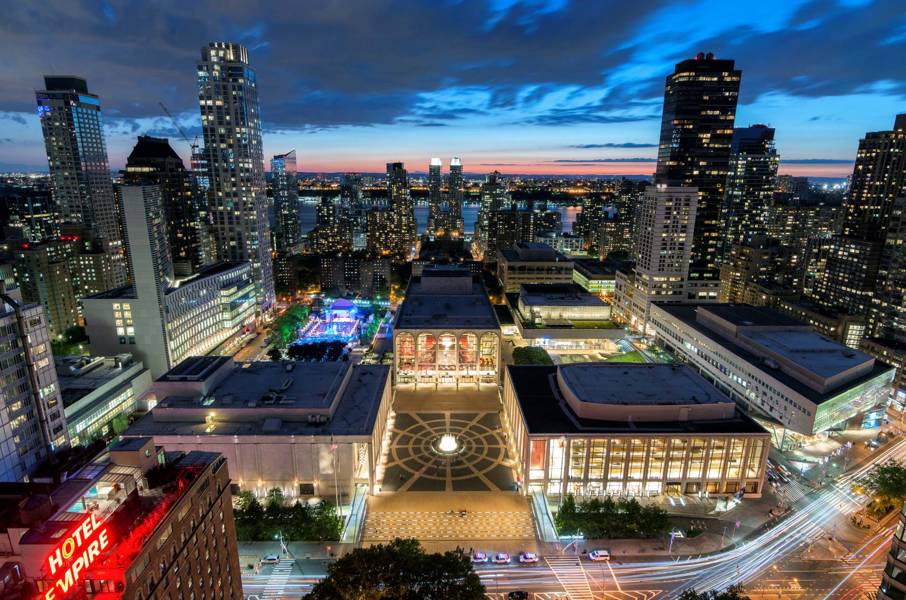
With support from the Stavros Niarchos Foundation (SNF), Lincoln Center has been working in recent years to extend its welcome equally in all directions with improved physical access, a broadly appealing range of new programming, and inviting public space.
Now, the iconic cultural institution has made public its design plans, rooted in an extensive process of public outreach to solicit ideas from thousands of New Yorkers. They coincide with a florescence of public programming that in recent years has brought new audiences to campus with effervescent events and with a sustained process of reflection on the institution’s history.
For SNF, this is the culmination of years of support aimed at helping more New Yorkers and visitors enjoy more public art and public space at Lincoln Center.
Our founder, Stavros S. Niarchos, supports Lincoln Center’s early offerings
SNF begins a series of grants for the Directors Lab at Lincoln Center Theater to enable directors from Greece to participate
SNF makes a significant contribution to Lincoln Center’s redevelopment plan, establishing the SNF Education and Outreach Fund
SNF makes the first of two grants supporting Arts in the Middle, a program to infuse arts experiences into public middle schools
SNF provides general operating support to Lincoln Center, among other grants in this period including to increase the social impact of the arts
The SNF-LC Agora Initiative forms a transatlantic bridge between Lincoln Center and the SNFCC, creating “Twin Agoras” in New York and Athens
Restart Stages, supported through SNF-LC Agora Initiative, transforms campus into a hub of arts access and civic engagement
Summer for the City debuts with SNF providing lead support for community programming
Lincoln Center launches the Legacies of San Juan Hill digital hub with support from SNF
San Juan Hill: Manhattan’s Lost Neighborhood premieres at Lincoln Center, also with support from SNF
The SNF Lincoln Center West Initiative for the physical transformation of the west side of campus begins
The spirit of SNF’s collaboration with Lincoln Center has always been to make the latter’s world-class resources more widely available. This was the impulse behind a multimillion-dollar contribution in 2011 to Lincoln Center’s redevelopment plan for the SNF Education and Outreach Fund.
In 2015 and 2018, SNF grant to Lincoln Center supported Arts in the Middle, a program delivered in partnership with the New York City Department of Education to infuse arts experiences into public middle schools and communities in the city. Other grants in that period supported Lincoln Center’s operations and a conference promoting social impact through the arts.
A variety of other grants in this period also supported Lincoln Center’s constituent organizations, including a series of grants starting in 2009 for the Directors Lab at Lincoln Center Theater to ensure the participation of artists from Greece, as well as a grant to enable high school students and teachers to enjoy the Theater’s programming for free. Other grants went toward Jazz at Lincoln Center and Live from Lincoln Center’s broadcast of performances by the Chamber Music Society of Lincoln Center in iconic Greek settings.
SNF’s ties to Lincoln Center go back much further, though. In 1966, the year the Metropolitan Opera House opened, our founder, Stavros S. Niarchos, made a significant donation in support of Lincoln Center’s early offerings.
The COVID-19 pandemic highlighted the essential role of outdoor public spaces like Lincoln Center while scrambling our sense of what purposes they could serve and what needs they could fill. In late 2020, as part of its pandemic relief initiative, SNF partnered with Lincoln Center on a multimillion-dollar plan to welcome the public back and sustain the hard-hit arts sector by reactivating the 16-acre campus’s extensive outdoor spaces.
SNF drew inspiration from the idea of the ancient Athenian agora as a multipurpose gathering place and, more proximately, from the Stavros Niarchos Foundation Cultural Center (SNFCC) in Athens, created through SNF’s largest single grant to date and given to the people of Greece in 2017. The SNF-LC Agora Initiative, echoing past SNF grants to forge artistic connections between Lincoln Center and Greece, sought to form a transatlantic bridge between Lincoln Center and the SNFCC that encouraged a two-way exchange knowledge and experience, and public art was shown in tandem at the “Twin Agoras” in Athens and New York.
“Remaking this space is an invitation to New Yorkers see their surroundings in new ways, to rethink public spaces so that they truly welcome and work for everyone,” said SNF Co-President Andreas Dracopoulos at the time. “Making the familiar unfamiliar as a catalyst for necessary change is one of the most important roles art can play, and SNF is very proud to be a part of this effort.”
Restart Stages revealed a voracious public appetite for the diversity of free summer programming Lincoln Center had offered, and the organization moved to repeat its success in 2022 with Summer for the City. It brought an even bigger and bolder lineup, for which SNF provided lead community programming support.
In the years since, Summer for the City and its ten-foot disco ball have become joyful staples of the season for New York, and the festival has reached more than a million visitors with concerts composed by the crowd, a mass wedding, Afrofuturist art, an American Sign Language performance of Sondheim’s Company, silent discos, a new take on a Sanskrit epic, and so, so much more.
Even with the instant popularity of Summer for the City, questions remained about whether this momentum portended deeper changes in the Lincoln Center campus’s identity as a public space or simply reflected an appetite for summer fun.
Commenting on the advent of Summer for the City in 2022, Andreas said, “We all recognize that public art and public space are at an inflection point. The question is whether we will attempt to get back to the ‘normal’ that existed before the pandemic or will use this moment to move forward, truly democratizing civic spaces, opening up access as broadly as possible, and embracing a definition of ‘public’ that encompasses every New Yorker and beyond.”
Lincoln Center recognized that creating a public space truly welcoming to all would require revisiting its past.
In the 1950s, the vibrant neighborhood of San Juan Hill on Manhattan’s Upper West Side was razed in the name of “urban renewal” and replaced by mega development projects, among them Lincoln Center.
Grappling with the bitter history of displacement and destruction inextricably linked with its origins, in 2023 Lincoln Center launched a digital hub, Legacies of San Juan Hill, to collect and share stories from the neighborhood in the form of interviews with former residents, scholarly essays, photos, an interactive map, and more. Legacies of San Juan Hill was supported by SNF, as was the documentary San Juan Hill: Manhattan’s Lost Neighborhood, which premiered at Lincoln Center during the 2024 edition of the New York Film Festival.
Lincoln Center’s difficult history remains baked into the topography of its campus today. To its west are the Amsterdam Houses, public housing built in 1948, while to its east more affluent blocks border Central Park. Approaching from the east, campus appears an inviting, almost cozy, space; from the west, it seems inaccessible and fortress-like.
To make Lincoln Center feel truly welcoming to all, the west side of its campus would have to be physically transformed.
With the SNFCC in Athens, SNF found that the best marker of whether a public space is succeeding is whether people are able to truly make it their own—to feel an almost proprietary sense of belonging and ease. In remaking the western side of its campus, Lincoln Center wanted to make sure that the perspectives of its neighbors were incorporated from the jump so that it would be, in a sense, their space even before anyone had set foot in it.
The effort began with a patient process of public outreach to solicit ideas through surveys, community workshops, focus groups, and stakeholder interviews. All told, the Manhattan cultural hub received feedback from more than 3,400 New Yorkers.
On May 19, 2025, having plowed this feedback into its design process, Lincoln Center unveiled its plans for transforming its campus, officially launching the SNF Lincoln Center West Initiative.
The infrastructural changes it encompasses are considerable: removing the wall along the western edge of campus and in its place creating points of entry, constructing a new 2,000-seat performing arts venue, and redesigning Damrosch Park, a New York City park abutting the western edge of campus that is managed by Lincoln Center. But as important to the everyday experience of the people who will use the public space are less monumental changes, informed by the community input Lincoln Center received: moveable chairs, trees for shade, a refreshing water feature.
The project is slated for completion by the spring of 2028, and work will begin in spring 2026. In the meantime, Lincoln Center is continuing the community open houses begun during the input process to keep its neighbors informed.
“In its perpetual effort to embrace and welcome the community at large, Lincoln Center continues to build beautiful bridges and, at the same time, to strengthen its commitment to its core vision: quality art and public space that are accessible to all,” said Andreas. “It’s a vision we share, and we are honored to be able to support such an important endeavor.”
Design Renderings
